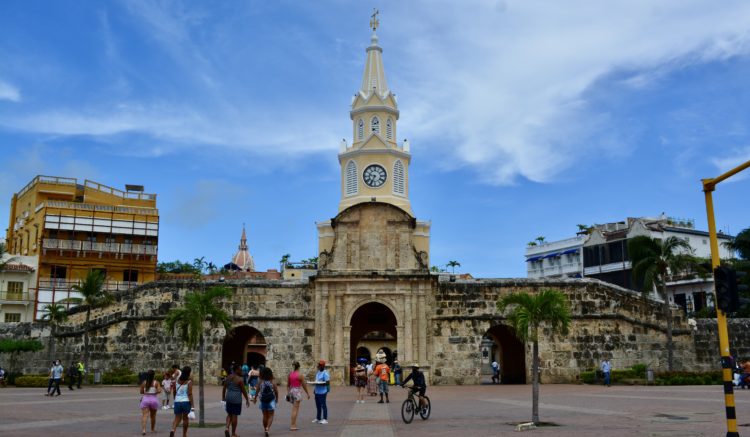From Bucaramanga we took the bus North to Mompos. The journey took most of the day, though once we were out of the mountain valley, the road improved immeasurably. Mompos is situated on the Magdalena river but as modern transport moved away from the river, the town became forgotten and isolated. Originally it was one of the earliest Spanish settlements in the Americas and contains a number of old churches and buildings dating back to the 1500s.
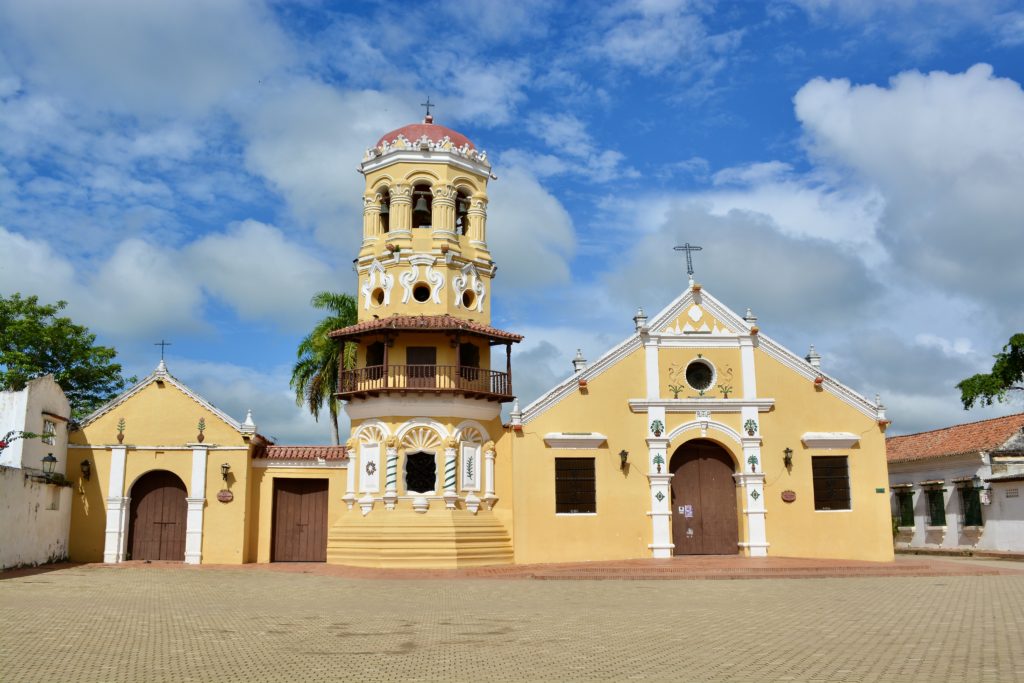
The old colonial centre is well preserved and the buildings all complement each other in style and colour. Today it is a UNESCO World Heritage Site and visiting it one can see why. Each of the principal churches, San Franciscans, Dominicans etc. are in the town, all neatly painted, though nearly always closed.
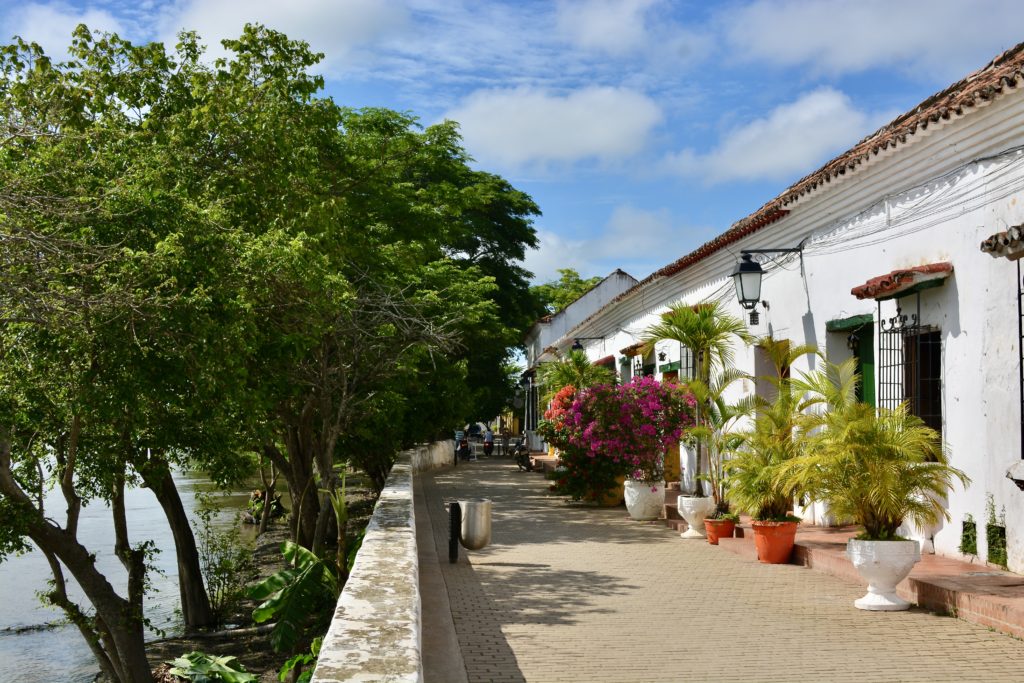
Many of the houses are in the traditional style centred around enclosed open courtyards and elegant shuttered windows, often with colourful plants facing the street. Our Hotel Nieto Mompox Riverfront was typical of one of these buildings.

The town is often said to be much more like the settings of Marquez’s novels, especially Love in the Time of Cholera than the author’s home town of Aracataca. Its laid back atmosphere and backwater status really contributing to this image.
Getting out of Mompos and to our next planned destination of Barranquilla proved to be a challenge. Mompos sits in Bolivar province but the normal route to Barranquilla and Cartagena goes through Sucre and Cordoba Provinces which for the days we were due to travel was subject to an “Armed Strike” by the Clan del Golfo, following the extradition of one of their leaders to the USA. Transport was paralysed and a number of vehicles were firebombed.
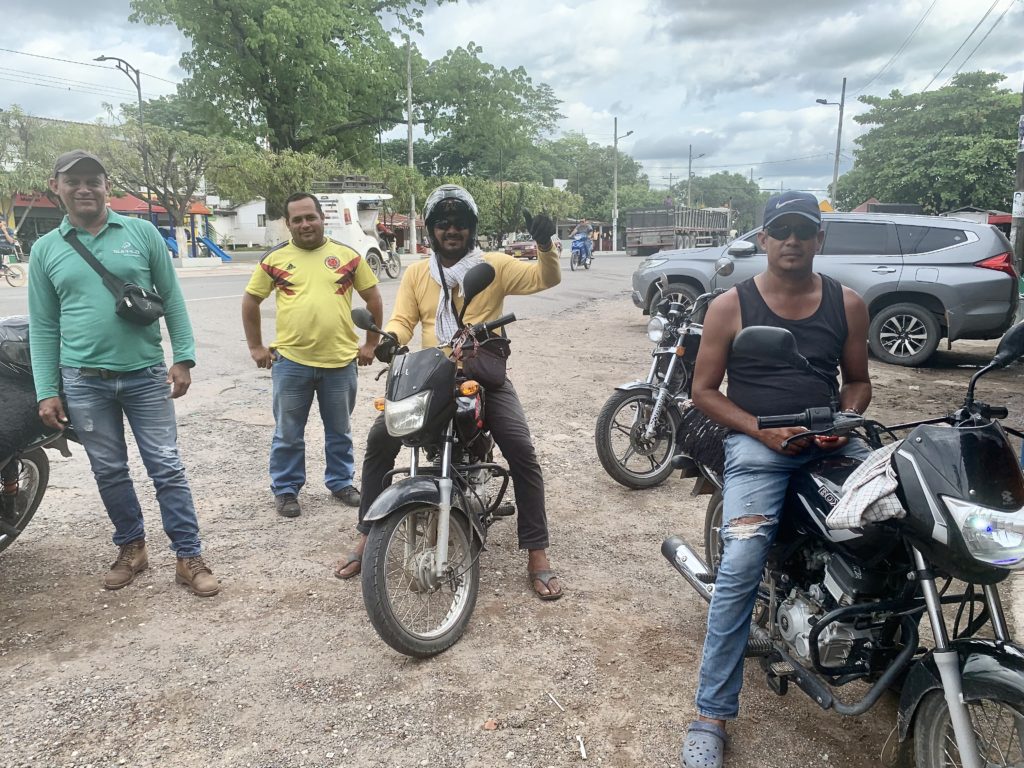
Eventually with the help of the bus company Copetran, we went back to the main Bucaramanga to Santa Marta road which was less impacted. As the final destination of our bus was Bogotá we were dropped of at the junction with the main road at El Burro which was little more than one building. We were met by a number of lads with motor bikes, who rode us 11 kms down the main road to the next town where we could pick up the through bus from Bucaramanga to Barranquilla.
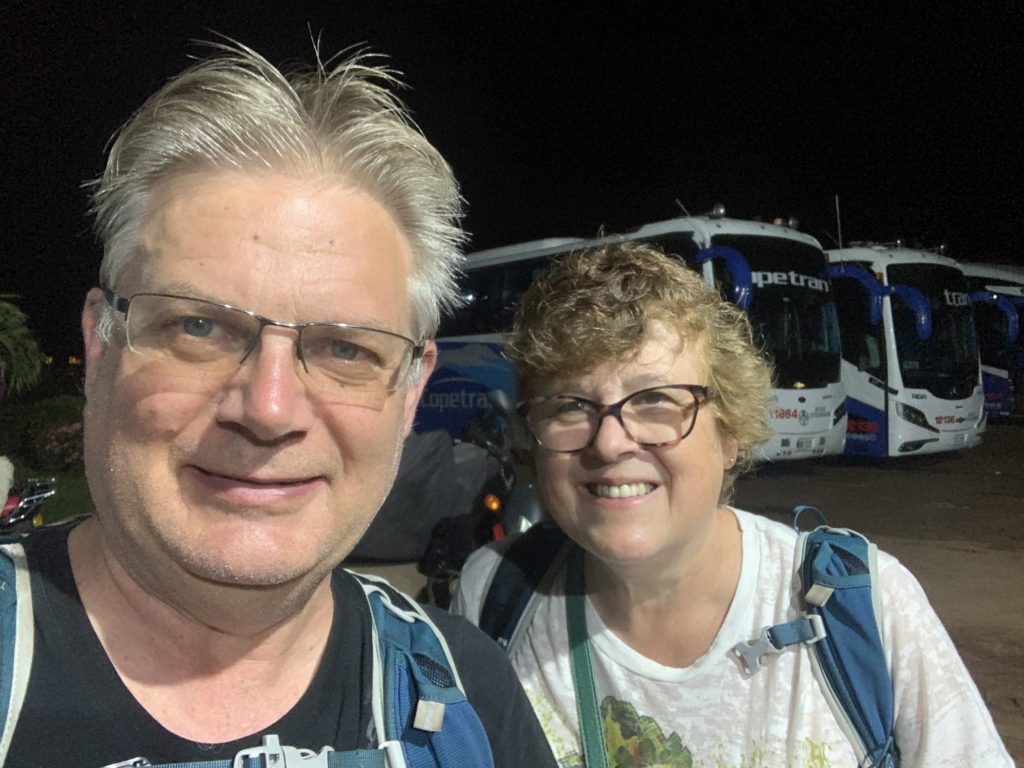
However at nightfall, the authorities closed the road and we had to overnight at the small Colombian town of El Cruse de la Loma. We found a small hotel next to the bus station which was clean and pleasant and got a motor rickshaw into town where we found an excellent parilla. The next morning the road was opened and the bus left at 5;30 am.

We finally made it to Barranquilla at 9:00am with our further incident. Barranquilla is a city that we hadn’t been to properly before, but one that I heard a lot about from my grandmother when she lived there in the early 1930s. We stayed in the North of the town in a very well to do residential area.
The town is quite large and it was too far to walk to the old centre. We got a taxi to Plaza de San Nicolás, the historic centre. Despite it being a Sunday the centre was full of life and noise. San Nicolás Church is quite elegant and set in a pleasant square surrounded by a number of Art Deco style buildings which could do with a bit of investment, but interestingly would have been there in my grandmothers days in the city. The markets are still there a couple of blocks away, and probably haven’t changed much over the years.
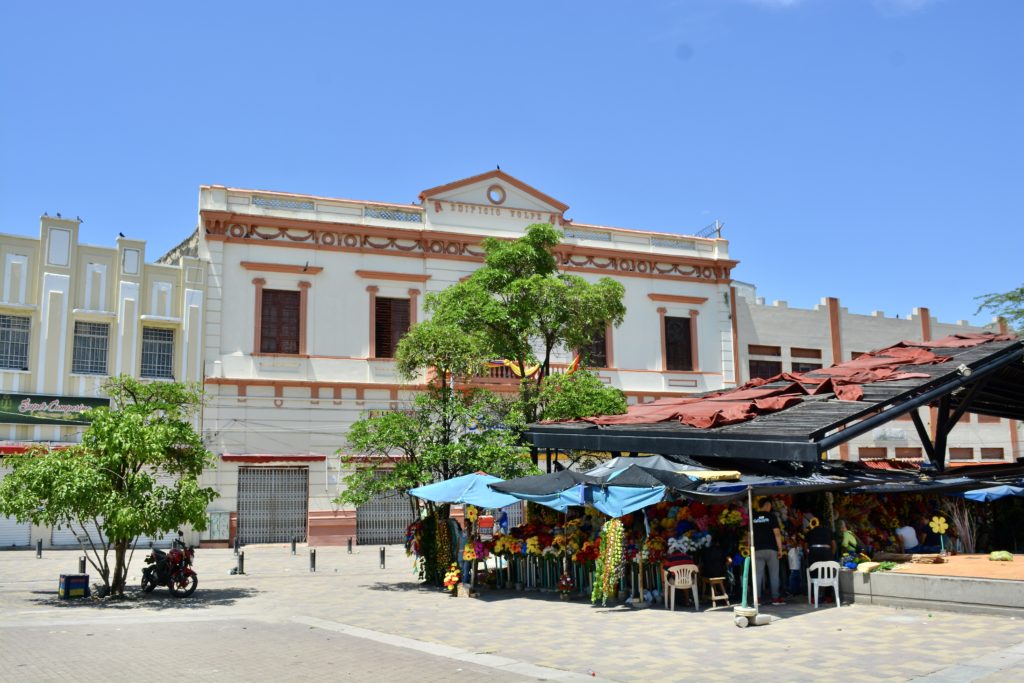
Barranquilla has a smart stadium on the edge of the city where the national team play its matches. It is also famous for being the home town of Shakira.
From Barranquilla we took a small bus operated by Berlinastur to Cartagena along the modern coastal highway and were dropped off a couple bocks away from the city walls of Cartagena as opposed the main bus station which is many miles out of town. The route seemed to be very safe with no signs of the “Armed Strike”.
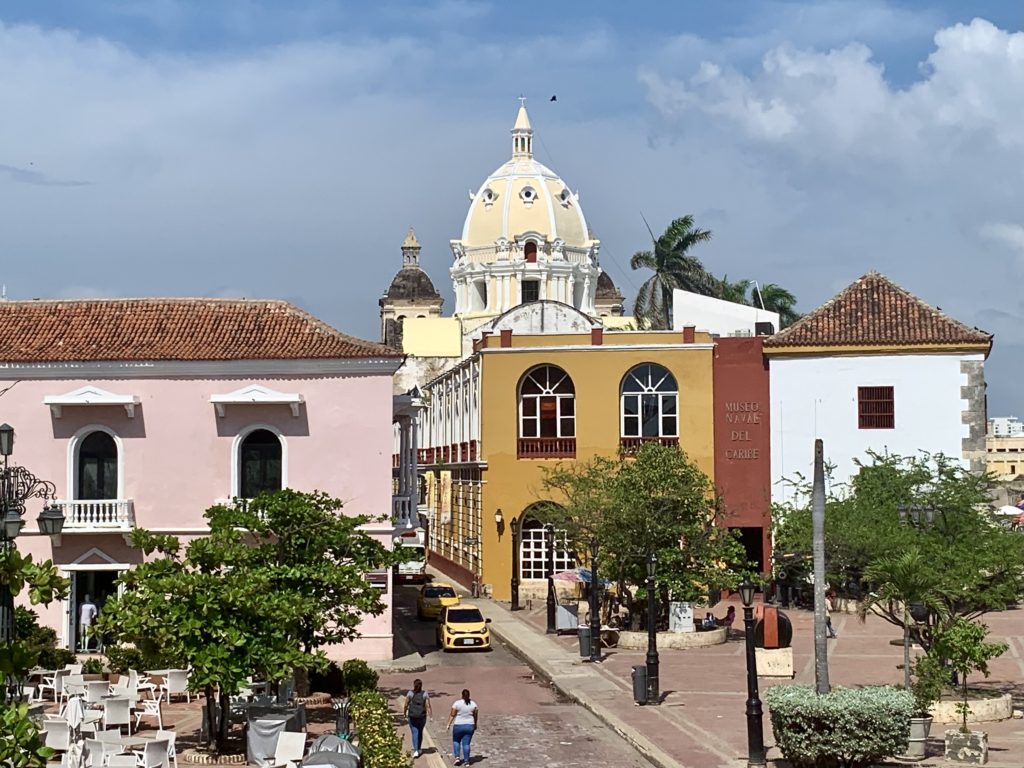
We have been to Cartagena a number of times and at times the old city can feel a bit like Disneyland with all the old colonial buildings turned into boutique hotels, restaurants or other businesses associate with tourism. Clearly the pandemic badly affected the tourist industry and as a consequence a number of businesses did not survive. We were last in Cartagena in 2018 and before then 2016, and it is noticeable that there has been a significant churn in the restaurants and hotels, however tourists are beginning to return, both high end and independent travellers, and this should help the city recover. Indeed it was the first place this time that we have seen young independent travellers in large numbers.
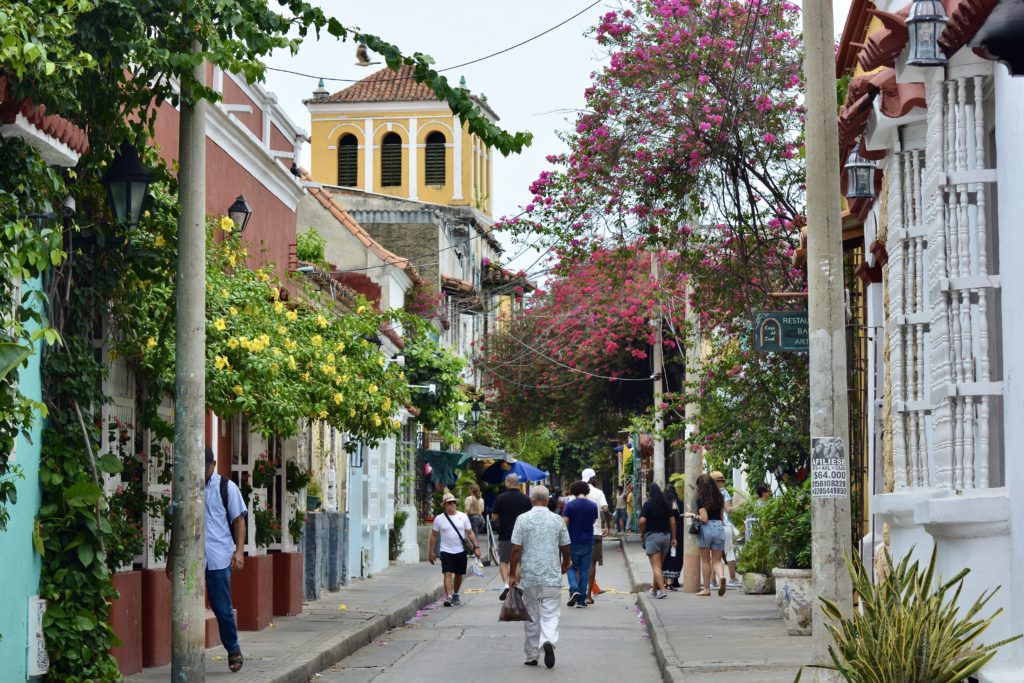
Notwithstanding the changes, many of the buildings in Cartagena have been recently spruced up with new paint. Furthermore the Getsemaní district with its small hotels appeared to be particularly upgraded with fresh paint and new tourist businesses.
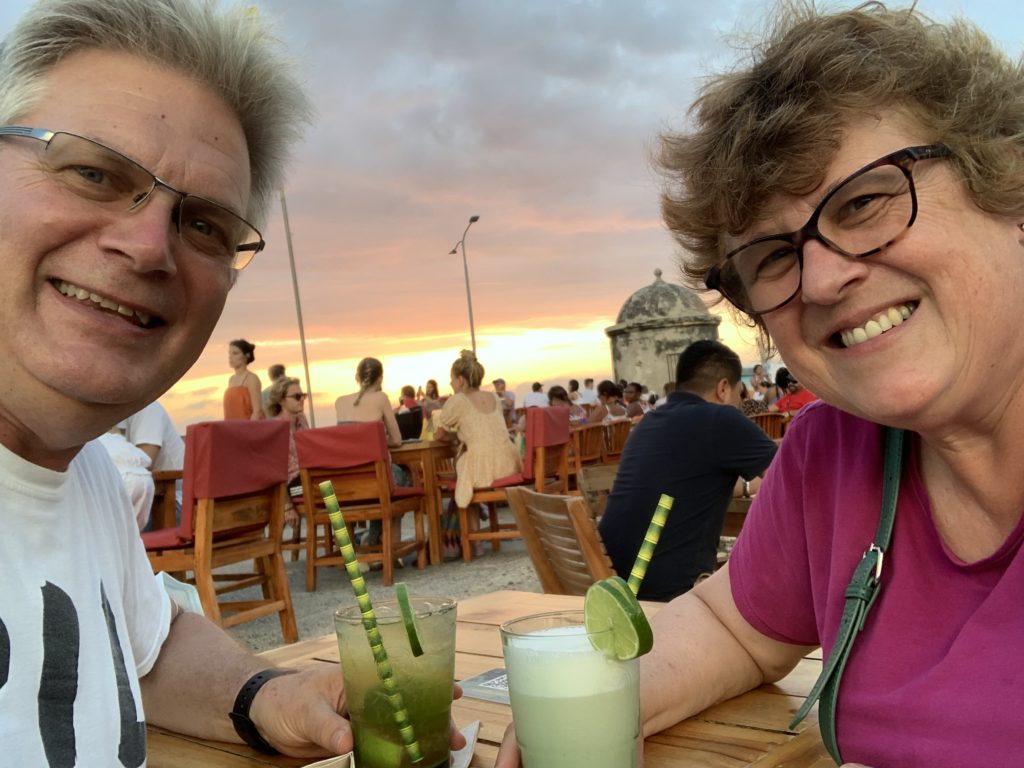
The Cafe de Mar bar on the city walls at Baluarte de Santo Domingo remains a favourite to have cocktail and watch the sunset over the Caribbean. It is more western prices than the rest of the city, but the location is superb.
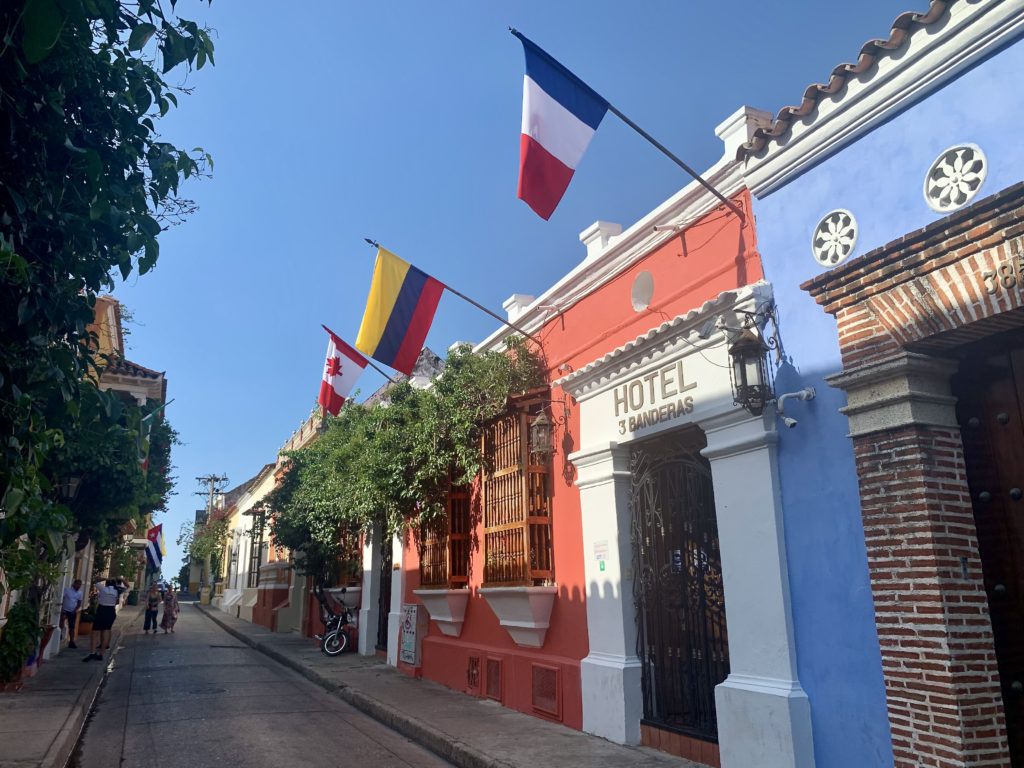
We stayed in a classic old colonial hotel called the 3 Banderas, which like many similar buildings has a brightly street side with wooden balustrades on the windows and a number of peaceful internal courtyards.
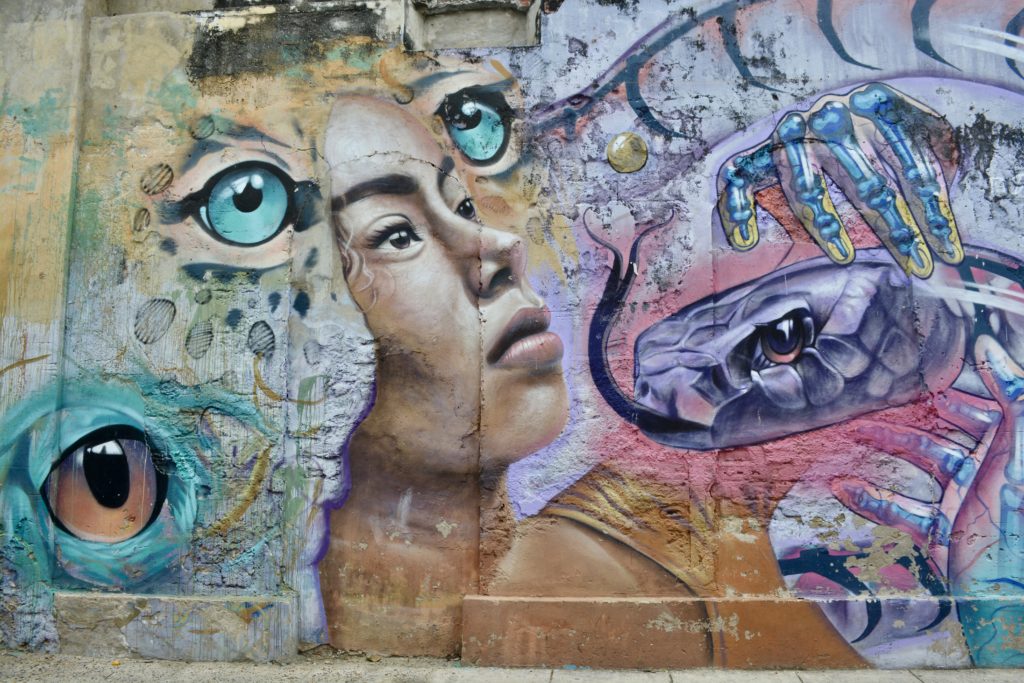
The street art on Calle de la Sierpe looked refreshed from our last visit, with a number of interesting new pieces as well as some of the main pieces from before remaining.

The city authorities are making a great effort to keep Cartagena clean and safe, with many tourist police around and at night time traffic in the heavily pedestrianised centre is strictly controlled. Over the four days we were in Cartagena, unusually we managed to get into all of the principal churches. Also at the Santo Domingo Church we recognised the same dignified blind man asking for small donations at the main entrance who was there back in 2018. It must have been tough for him and indeed many of the others at the margins of society.
Dates visited Wednesday 4th to Friday 13th May 2022
